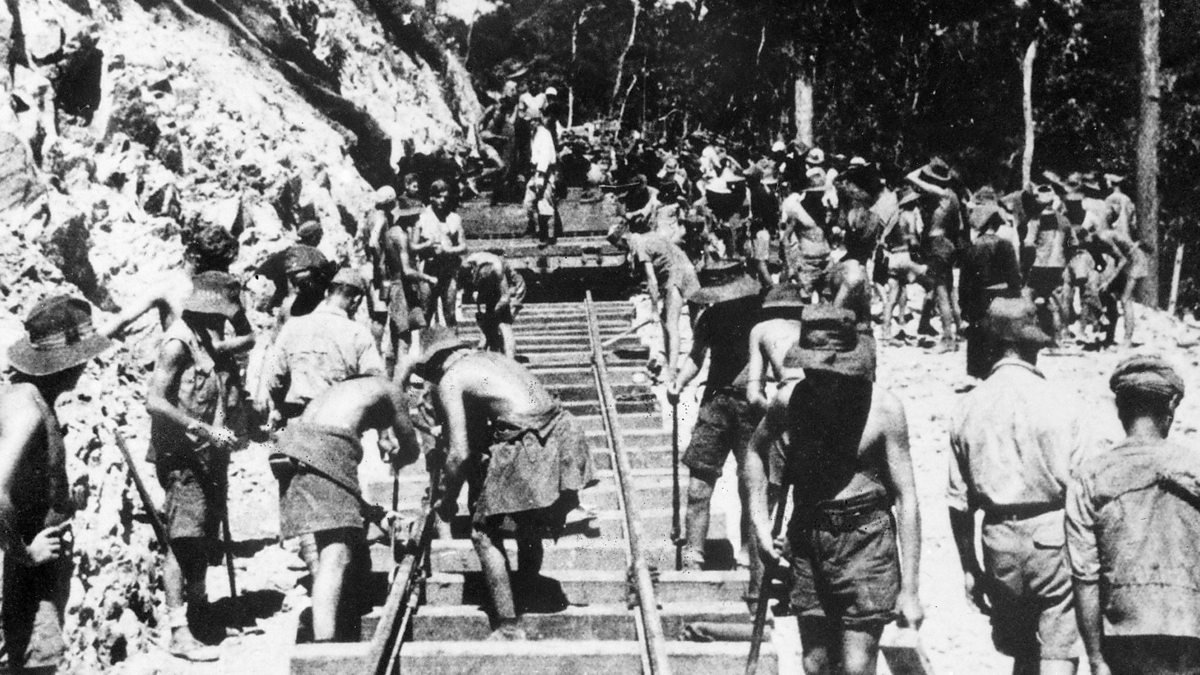
Exploring the Death Railway in Kanchanaburi, Thailand
Kanchanaburi (Kanburi), Thailand. c. 1945. The prisoner of war (POW) officers’ camp showing huts and parade ground. By January 1945 all officers, except some padres and medical officers, were concentrated in this special camp. From June 1945 the Japanese began evacuating these officers to Nakomnayok (Nakom Nayok) north of Bangkok. Kanchanaburi (also known to POWs as Kanburi) is located fifty kilometres north of Nong Pladuk (also known as Non Pladuk), or 364 kilometres south of Thanbyuzayat. (Donor B. Theobald). The town of Kanchanaburi is 129 kilometres North-West of Bangkok and is best reached by road, along the National Highway which runs north from the capital. There are bus and train services from Bangkok. Kanchanaburi War Cemetery is situated adjacent to Saeng Chuto Road which is the main road through the town. When approaching from Bangkok, the cemetery is on the left side of the road, towards the far (northern) end of the town. A Commission signpost faces the cemetery on the opposite side of the road.
ITINERARY
Bridge on the River Kwai
Our tour began at the Bridge on the River Kwai (แม่น้ำแดว) (pronounced “quail” but without the “l”). This picturesque bridge spans a now beautiful and serene area of the countryside. The Bridge on the River Kwai is a popular tourist destination complete with food and souvenir stalls, but is a beautiful landmark nonetheless. The iron bridge has been modified to include a walkway and several side platforms. We used these as viewpoints to overlook several restaurants on the river’s edge and a nearby temple. The bridge also has a small train catering to tourists that slowly ran back and forth along the tracks. The best views are on the other side of the river. Here there ample shady trees and much fewer tourists.

Death Railway Museum and Research Center
Beside the Kanchanaburi War Cemetery is the Death Railway Museum. We easily spent an hour exploring the various exhibits of the Thailand-Burma Railway. The museum’s founder, Rod Beattie, did a phenomenal job presenting the railway’s history. He did so through hundreds of black and white photographs of the railway and the skeletal men who built it, displays of artifacts (both tools and memorabilia of the Allied prisoners and Japanese guards), and models of the landscape, bridges, and railway path. One can only begin to understand the level of intensity demanded by the railway’s construction and the barbarity and suffering that tens of thousands of men endured. We respectfully followed the request of the museum and did not take photographs of what was inside.

Kanchanaburi War Cemetery
Just up the street from the Bridge on the River Kwai is the Kanchanaburi War Cemetery.
This cemetery is the resting place for nearly 7,000 Australian, English, and Dutch POWs who died during the construction of the Death Railway. The remains of American POWs have since been returned to the US. These men were originally buried at the POW camp grounds stationed along the railway, but years later, their remains were found, identified, and laid to rest in this memorial cemetery. The sacred grounds were perfectly manicured and serene. As we walked down the aisles, we took notice of the men who died so young. Some were just 18 years old, while many of the graves markers we looked at were in their very early twenties. Although nothing can make up for the suffering these men went through, this is a peaceful way to remember their sacrifices.




